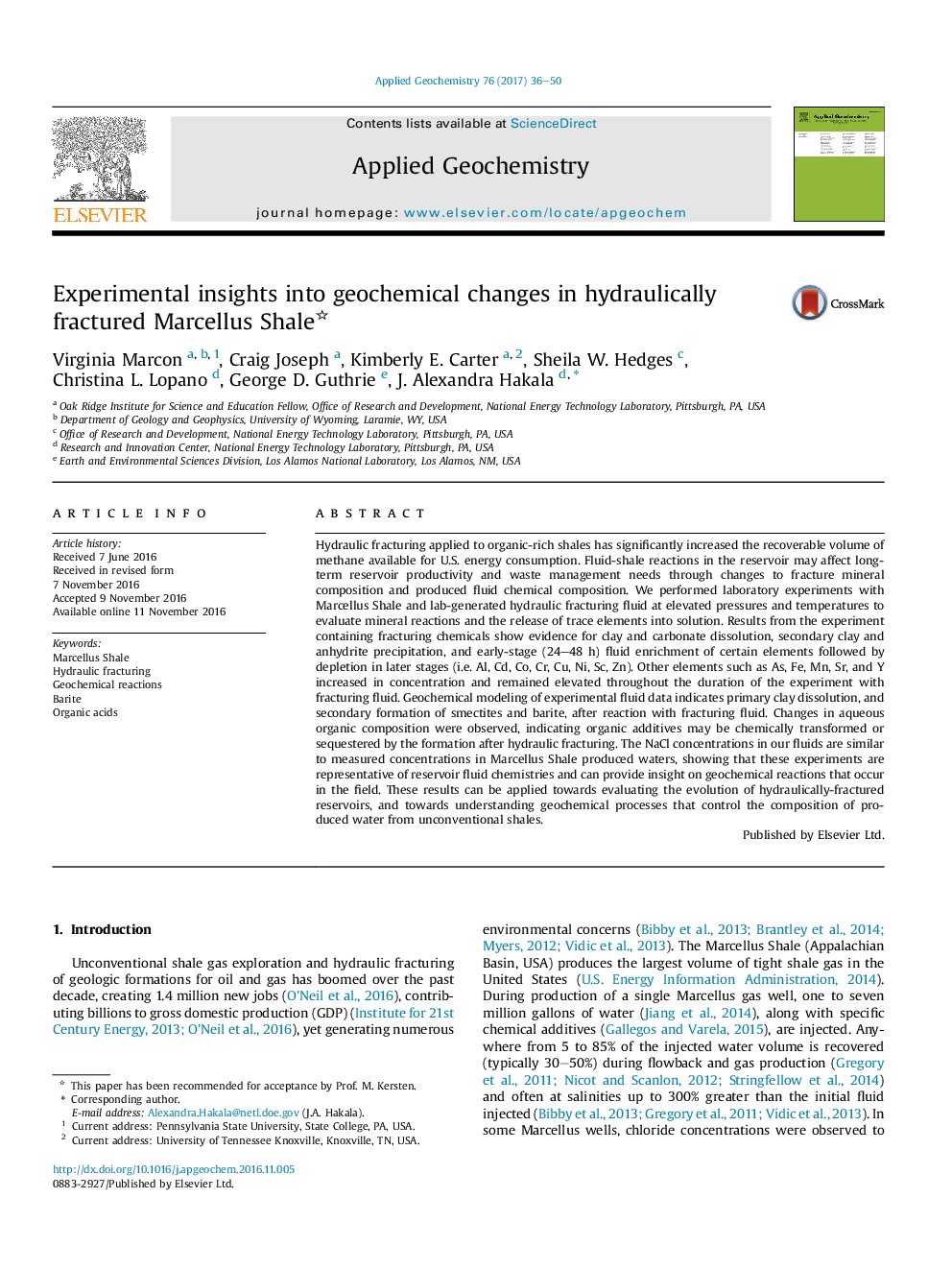| کد مقاله | کد نشریه | سال انتشار | مقاله انگلیسی | نسخه تمام متن |
|---|---|---|---|---|
| 5752616 | 1620215 | 2017 | 15 صفحه PDF | دانلود رایگان |
- Metal concentrations could be at their peak in produced waters recovered 24-48 after fracturing.
- Carbonate dissolution and secondary precipitation is observed in the presence of frac chemicals.
- Organic acid, benzene and toluene concentrations increased in the experiment with frac chemicals.
- SI for anhydrite depended on the redox conditions applied during geochemical modeling.
- Calculations including organic acids decreased SI for barite and increased SI for smectite and carbonates.
Hydraulic fracturing applied to organic-rich shales has significantly increased the recoverable volume of methane available for U.S. energy consumption. Fluid-shale reactions in the reservoir may affect long-term reservoir productivity and waste management needs through changes to fracture mineral composition and produced fluid chemical composition. We performed laboratory experiments with Marcellus Shale and lab-generated hydraulic fracturing fluid at elevated pressures and temperatures to evaluate mineral reactions and the release of trace elements into solution. Results from the experiment containing fracturing chemicals show evidence for clay and carbonate dissolution, secondary clay and anhydrite precipitation, and early-stage (24-48Â h) fluid enrichment of certain elements followed by depletion in later stages (i.e. Al, Cd, Co, Cr, Cu, Ni, Sc, Zn). Other elements such as As, Fe, Mn, Sr, and Y increased in concentration and remained elevated throughout the duration of the experiment with fracturing fluid. Geochemical modeling of experimental fluid data indicates primary clay dissolution, and secondary formation of smectites and barite, after reaction with fracturing fluid. Changes in aqueous organic composition were observed, indicating organic additives may be chemically transformed or sequestered by the formation after hydraulic fracturing. The NaCl concentrations in our fluids are similar to measured concentrations in Marcellus Shale produced waters, showing that these experiments are representative of reservoir fluid chemistries and can provide insight on geochemical reactions that occur in the field. These results can be applied towards evaluating the evolution of hydraulically-fractured reservoirs, and towards understanding geochemical processes that control the composition of produced water from unconventional shales.
162
Journal: Applied Geochemistry - Volume 76, January 2017, Pages 36-50
